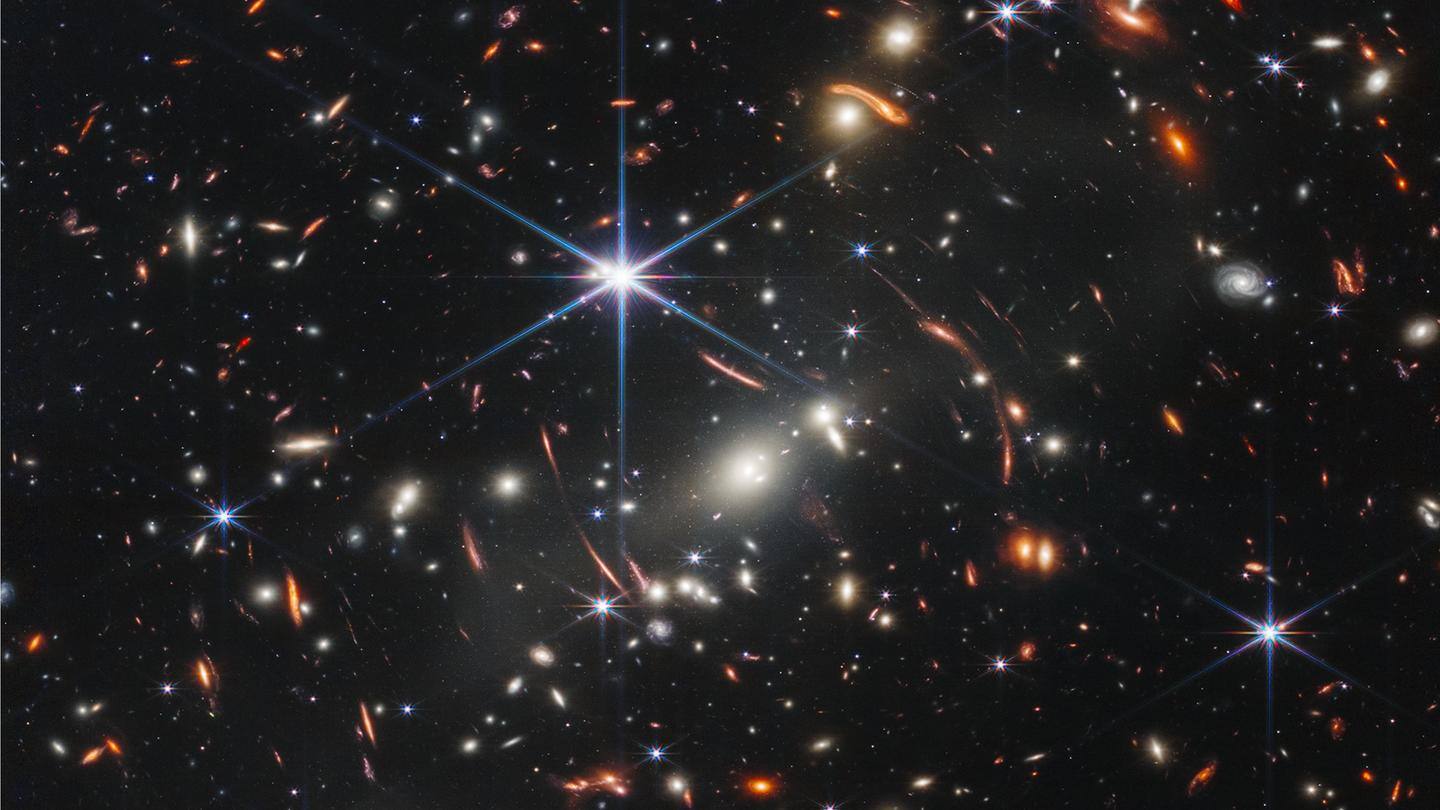
Scientists spot oldest-ever star cluster in James Webb's deep-field image
What's the story
Remember the first deep-field image captured by the James Webb Space Telescope (JWST)?
According to a group of Canadian astronomers, this picture holds certain mysteries. It has been revealed that the image contains one of the most distant star clusters, located in the 'Sparkler Galaxy,' which lies nine billion light-years away.
This research has been detailed in a publication in Astrophysics Journal Letters.
Context
Why does this story matter?
How exciting is it that scientists can now probe into old star clusters which might have originated right at the very beginning of the universe? Determining the age of ancient stars in distant galaxies is now possible, thanks to JWST.
This remarkable finding has opened up new avenues in space research. One thing is certain, many more marvelous discoveries are on their way.
Image
The equipment on JWST helped age-date the star clusters
Scientists observed 'sparkles' in the galaxy across a wide range of wavelengths in the deepest image of universe captured by JWST.
The age of the star clusters has been determined by the equipment on the telescope named Near-Infrared Imager and Slitless Spectrograph (NIRISS).
Also, NIRISS has not detected the presence of oxygen, which is often associated with young star clusters.
Significance
What is unique about the star clusters?
Star clusters are believed to have originated during the birth of galaxies. That means these ancient celestial objects can provide significant insights into the formation, evolution, and growth of galaxies.
This is exactly why the Canadian NIRISS Unbiased Cluster Survey (CANUCS) team is scrutinizing the Sparkler galaxy.
They discovered 12 compact objects around the galaxy out of which five were star clusters.
Official words
The star clusters were discovered to be ancient and massive
"It was really surprising to us that that we were able to find such a unique object so early on in the JWST data," stated Kartheik G. Iyer, co-lead author of the study.
"According to our analysis, we found that most of these sparkles around the main body of the galaxy are really massive and really old, stellar systems."
Reason
Hubble's image of Sparkler galaxy couldn't reveal nearby star clusters
The image taken by the Hubble Telescope of the Sparkler galaxy could not resolve the star clusters in its vicinity owing to an effect called 'gravitational lensing.'
This phenomenon is the reason behind the elongated appearance of the galaxy.
Understanding the extent of magnification in the image might aid in the precise determination of the galaxy's age and distance from the Earth.
Difficulty
Determining the age of the star clusters is not easy
The Milky Way galaxy is estimated to possess 150 globular clusters but determining their age has not been an easy job.
Lamiya Mowla, a co-author of the study, explains it is particularly difficult to age-date ancient objects in our galaxy.
Moving on to the Sparkler galaxy, she explains that its surrounding star clusters, which lie nine billion light-years away, appear to be younger.